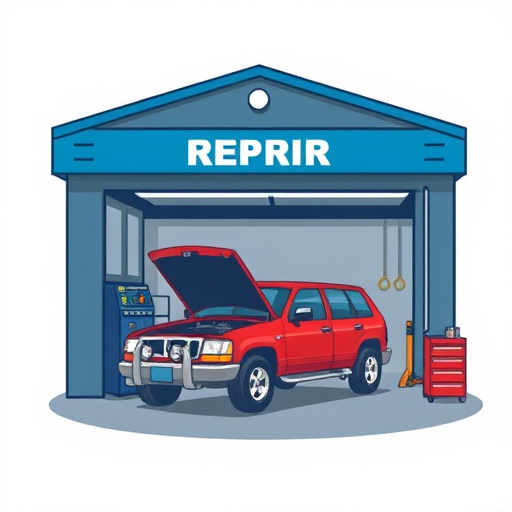PDR Tools: Preserving Factory Paint Finish Effortlessly

PDR tools are a specialized collision repair technique for gently restoring damaged vehicle paintwor…….
In an era defined by rapid technological advancement, the concept of Public Digital Transformation (PDR) has emerged as a game-changer across industries and nations. At the heart of this transformation lie PDR tools, powerful software solutions designed to streamline digital processes, enhance public service delivery, and drive innovation in government operations. This comprehensive article aims to explore every facet of PDR tools, from their foundational elements to their profound global impact. By delving into their historical context, technological innovations, economic implications, and regulatory frameworks, we will uncover the transformative potential of these tools and their role in shaping a digital future.
PDR tools encompass a suite of software applications, platforms, and technologies tailored to support and accelerate digital transformation within government agencies, public services, and administrative processes. These tools are designed to optimize efficiency, improve transparency, and enhance citizen engagement by leveraging the power of data, automation, and digital connectivity. At its core, PDR involves the strategic adoption and integration of digital technologies to modernize public sector operations, ensuring they meet the evolving needs of a digitally connected world.
Digital Service Delivery Platforms: These platforms act as centralized hubs, enabling citizens to access various government services online, from applying for IDs to filing tax returns. They streamline processes and provide a seamless user experience.
Data Management Systems: Effective PDR relies on data-driven decision-making. These systems facilitate the collection, storage, and analysis of vast amounts of data, ensuring it is secure, accessible, and utilized for policy formulation and service improvement.
Automation and Workflow Management: Automation plays a crucial role in optimizing processes. Tools automate repetitive tasks, reduce human error, and improve overall operational efficiency, allowing public servants to focus on more strategic initiatives.
Analytics and Business Intelligence: Advanced analytics enable governments to gain insights from data, identify trends, and make informed decisions. These tools assist in performance monitoring, resource allocation, and the development of targeted policies.
The concept of PDR gained momentum in the late 20th century as countries grappled with the challenges of rapid urbanization, technological advancements, and changing citizen expectations. The early 21st century witnessed a surge in digital initiatives across governments, leading to the recognition of the need for structured, comprehensive strategies. This evolution has been marked by key milestones:
PDR tools have left an indelible mark on public sectors worldwide, fostering digital transformation and improving service delivery. The global impact is evident in several key trends:
Asia-Pacific: Countries like Singapore and Australia have led the way in PDR, implementing robust digital platforms and data-driven policies. For instance, Singapore’s “Smart Nation” initiative leverages advanced technologies to enhance various sectors, improving efficiency and citizen services.
Europe: The European Union (EU) has promoted digital transformation through initiatives like the Digital Single Market, aiming to create a seamless digital environment across member states. Countries like Denmark and Finland have adopted PDR tools to streamline public service delivery, resulting in higher citizen satisfaction.
North America: The United States and Canada have made significant strides in PDR, focusing on data privacy, cybersecurity, and modernizing government IT infrastructure. Cities like New York and Toronto have implemented digital solutions for urban planning and citizen engagement.
Citizen-Centric Digital Services: A growing emphasis on putting citizens at the heart of digital transformation has led to the development of user-friendly, accessible online services, improving public sector accountability and trust.
Data-Driven Policy Formulation: Governments are increasingly utilizing data analytics to inform policy decisions, enabling more targeted and effective service delivery. This trend is evident in areas like healthcare, education, and urban planning.
Mobile Government Services: The rise of mobile technologies has prompted governments to develop mobile applications, making services more accessible and convenient for citizens on the go.
Open Data and Transparency: Many countries are adopting open data policies, promoting transparency and encouraging innovation by allowing public access to government data.
The implementation of PDR tools has significant economic implications, influencing various sectors and market dynamics.
IT Sector Growth: The global IT services market, driven by PDR initiatives, experienced substantial growth, reaching a value of USD 3.8 trillion in 2021, with predictions of continued expansion.
Digital Service Providers: As governments outsource digital transformation projects, specialized service providers have emerged, creating new business opportunities and fostering competition in the market.
Government Spending: Public sector investments in PDR tools have been substantial, particularly in developed nations. According to a 2022 report, global public sector IT spending is projected to reach USD 1.4 trillion by 2025.
Private Sector Partnerships: Many governments partner with private technology companies to accelerate digital transformation, leading to innovative solutions and shared costs. These partnerships have resulted in successful projects, such as digital identity systems in several countries.
Efficiency and Cost Savings: PDR tools can significantly reduce operational costs for public sectors by streamlining processes, automating tasks, and optimizing resource allocation. This results in better value for tax dollars.
Job Creation and Skills Development: The digital transformation landscape creates new job opportunities, from software developers to data analysts, fostering skill development and contributing to economic growth.
Innovation and Economic Growth: Governments that invest in PDR tools often become hubs for digital innovation, attracting startups and driving economic growth through the creation of new industries and business models.
PDR tools have been propelled forward by technological breakthroughs, each carrying the potential to reshape public sector operations.
Artificial Intelligence (AI): AI is revolutionizing PDR through automation, predictive analytics, and intelligent decision-making. Chatbots and virtual assistants enhance citizen support, while AI algorithms optimize resource allocation and fraud detection.
Blockchain Technology: This distributed ledger technology offers enhanced security, transparency, and data integrity for digital transactions and records. Governments are exploring blockchain for secure identity verification, smart contracts, and efficient supply chain management.
Internet of Things (IoT): IoT devices provide real-time data collection and monitoring capabilities, enabling smarter cities and improved public service delivery. For instance, IoT sensors can optimize traffic flow, enhance environmental monitoring, and enable remote patient care.
Cloud Computing: The cloud provides scalable, flexible, and cost-effective infrastructure for PDR tools, allowing for efficient data storage, processing, and access. Cloud-based platforms facilitate collaboration between government agencies and private sector partners.
The future holds immense possibilities for PDR tools with emerging technologies like:
5G and Edge Computing: These technologies enable faster, more reliable connectivity, supporting real-time data processing and enhanced IoT applications.
Quantum Computing: While still in its early stages, quantum computing could revolutionize data analysis and simulation capabilities, offering unprecedented computational power for complex problems.
Augmented Reality (AR) and Virtual Reality (VR): AR and VR technologies have the potential to transform public service delivery, providing immersive experiences for training, planning, and citizen engagement.
As PDR tools gain prominence, the development of comprehensive policies and regulations has become crucial to ensure their responsible deployment and address associated challenges.
Data Privacy and Protection: Governments worldwide are implementing data protection laws, such as the General Data Protection Regulation (GDPR) in Europe, to safeguard citizen data and ensure its ethical use.
Cybersecurity Standards: With increasing digital connectivity, cybersecurity has become a top priority. Many countries have established guidelines and standards to protect government systems and sensitive data from cyber threats.
Open Data Policies: These policies promote the publication of public data for reuse, encouraging innovation and transparency. Examples include the Open Government Data Initiative in the US and the European Open Data Portal.
Digital Service Delivery Guidelines: Several nations have issued guidelines to ensure the quality, accessibility, and security of digital services provided to citizens.
Compliance with these policies and regulations is essential for technology providers, influencing the design, implementation, and maintenance of PDR tools. Companies must invest in robust data protection measures, cybersecurity protocols, and transparent service delivery models to gain public trust and avoid legal repercussions.
Despite its immense potential, the implementation of PDR tools is not without challenges and criticisms. Addressing these issues is crucial for ensuring their successful adoption and long-term sustainability.
Digital Divide: Ensuring equal access to digital services remains a challenge, particularly in rural or underserved areas. Bridging this divide requires strategic investments in infrastructure and digital literacy programs.
Data Security and Privacy: With vast amounts of sensitive data being collected and processed, safeguarding citizen information from breaches and misuse is paramount. Robust cybersecurity measures and public education on data privacy are essential.
Interoperability: Different government systems and platforms often lack interoperability, making it challenging to share data and deliver seamless services. Standardization and modernization efforts are needed to overcome this hurdle.
Resistance to Change: Public sector employees may resist adopting new technologies or processes, fearing job displacement or unfamiliarity with digital tools. Training and change management strategies can help alleviate these concerns.
Criticisms of PDR tools often center around potential negative impacts on privacy, job losses, and the digital divide. To address these concerns:
Transparency and Public Engagement: Governments should engage citizens in the digital transformation process, explaining the benefits, addressing privacy concerns, and seeking feedback to build trust.
Comprehensive Training Programs: Investing in training ensures public servants can adapt to new technologies and processes, fostering a culture of digital literacy across the public sector.
Equitable Infrastructure Development: Strategic investments in digital infrastructure, including broadband connectivity and digital devices, are necessary to bridge the digital divide and ensure universal access to services.
Data Governance and Ethical AI: Establishing robust data governance frameworks and promoting ethical AI practices can help mitigate privacy risks and ensure responsible use of data and technology.
India’s Aadhaar card program is a groundbreaking example of PDR, providing a unique identity to over a billion citizens. This biometric ID system has streamlined government service delivery, enabling efficient and secure access to benefits and services. The program has improved citizen convenience, reduced corruption, and empowered individuals with verifiable digital identities.
Singapore’s “Smart Nation” vision is a prime example of PDR on a city-state scale. Through the integration of sensors, data analytics, and digital platforms, Singapore has transformed urban living. Their smart transportation systems optimize traffic flow, while connected homes and buildings enhance energy efficiency. The government’s data-driven approach has led to improved public safety, environmental sustainability, and citizen satisfaction.
Estonia’s digital transformation has been a game-changer in healthcare delivery. Their e-Residency program provides citizens with secure online identities, enabling access to digital health services. Through telemedicine and electronic health records, Estonia has improved healthcare accessibility, reduced waiting times, and enhanced patient outcomes. This case highlights the potential of PDR tools in rural or geographically dispersed populations.
The future of PDR tools holds immense promise, with emerging trends shaping their development and deployment.
Sustainable Development: PDR tools will play a pivotal role in achieving the United Nations’ Sustainable Development Goals (SDGs), from digital financial inclusion to efficient resource management.
Personalized Citizen Services: Utilizing AI and data analytics, governments can deliver personalized services, anticipating citizen needs and preferences, and enhancing user experiences.
Digital Public Goods: Open-source software and data sharing initiatives will foster collaboration among nations, enabling the creation of digital public goods accessible to all.
Web3 and Blockchain Integration: The convergence of Web3 technologies with blockchain offers new possibilities for secure, decentralized digital identities, smart contracts, and data governance.
AI-Enhanced Decision Making: Advanced AI algorithms will enable more sophisticated predictive analytics, supporting data-driven policy formulation and improving service delivery.
5G and Edge Computing Revolution: As 5G networks roll out, edge computing will revolutionize real-time data processing, enabling smarter cities, autonomous vehicles, and enhanced IoT applications.
Resilient Digital Infrastructure: Governments should invest in robust, resilient digital infrastructure to safeguard against cyber threats and ensure continuous service delivery.
Data Skills Development: Building a skilled workforce capable of managing and analyzing data is essential for maximizing the benefits of PDR tools. Public sector organizations should prioritize data literacy programs.
Public-Private Partnerships (PPPs): Continuing collaboration between governments and private technology companies will drive innovation, resource sharing, and cost efficiency in digital transformation efforts.
PDR tools stand as catalysts for change, transforming public sectors worldwide and shaping a more efficient, responsive, and citizen-centric future. From data-driven policy formulation to enhanced service delivery, these tools have proven their worth across diverse regions and contexts. As technology continues to evolve, PDR must adapt and innovate, ensuring it remains a powerful force for good in the digital age.
By embracing technological advancements, addressing challenges head-on, and prioritizing citizen needs, governments can harness the full potential of PDR tools. The future holds promise for smarter, more sustainable cities, improved public services, and enhanced digital literacy among citizens. As we navigate this digital transformation, the lessons learned and best practices shared will contribute to a global ecosystem where technology serves humanity’s collective well-being.
Q: What is the primary goal of PDR tools?
A: The primary goal is to modernize public sector operations by leveraging technology to improve efficiency, transparency, and citizen service delivery.
Q: How do PDR tools address the digital divide?
A: Through strategic investments in digital infrastructure, device accessibility, and digital literacy programs, PDR aims to bridge the gap between those with access to technology and those without.
Q: What are some common benefits of implementing PDR tools?
A: Benefits include cost savings through process automation, improved decision-making based on data analytics, enhanced security and privacy through robust cybersecurity measures, and better citizen engagement through digital platforms.
Q: How do PDR tools contribute to sustainable development?
A: PDR enables efficient resource management, promotes financial inclusion, facilitates environmental monitoring and conservation efforts, and supports the development of smart cities, all contributing to sustainable development goals.
Q: What role does data privacy play in PDR?
A: Data privacy is a critical consideration, and governments implement policies and regulations to safeguard citizen data. Transparent data handling practices, secure storage, and user consent are essential aspects of responsible PDR.

PDR tools are a specialized collision repair technique for gently restoring damaged vehicle paintwor…….

PDR tools (Paintless Dent Repair) revolutionize auto repair by offering efficient, precise, and cost…….

Professional Dent Repair (PDR) is an eco-friendly and cost-effective method for car dent repair, usi…….

PDR tools are crucial for auto technicians, enabling efficient, precise dent removal without damagin…….

Modern PDR tools prioritize sustainability with eco-conscious materials like recycled aluminum and b…….

PDR tools revolutionize auto body repair with advanced capabilities, enhancing productivity and qual…….

PDR tools are essential in e-commerce for optimizing product data, enhancing user experiences, and r…….

PDR tools are essential for auto repair, offering precise scratch repairs and frame straightening wi…….

PDR tools, initially for auto body repairs, are now versatile and indispensable across various indus…….

PDR tools are crucial for achieving flawless car restoration and high-quality auto body repairs with…….